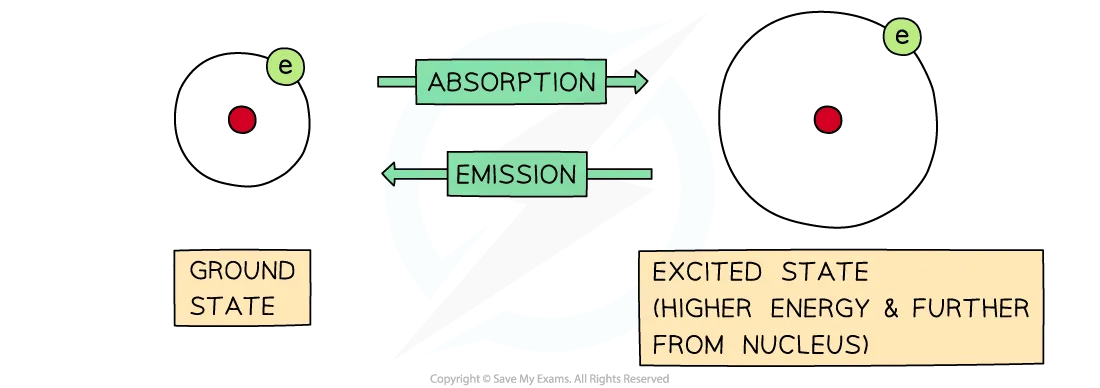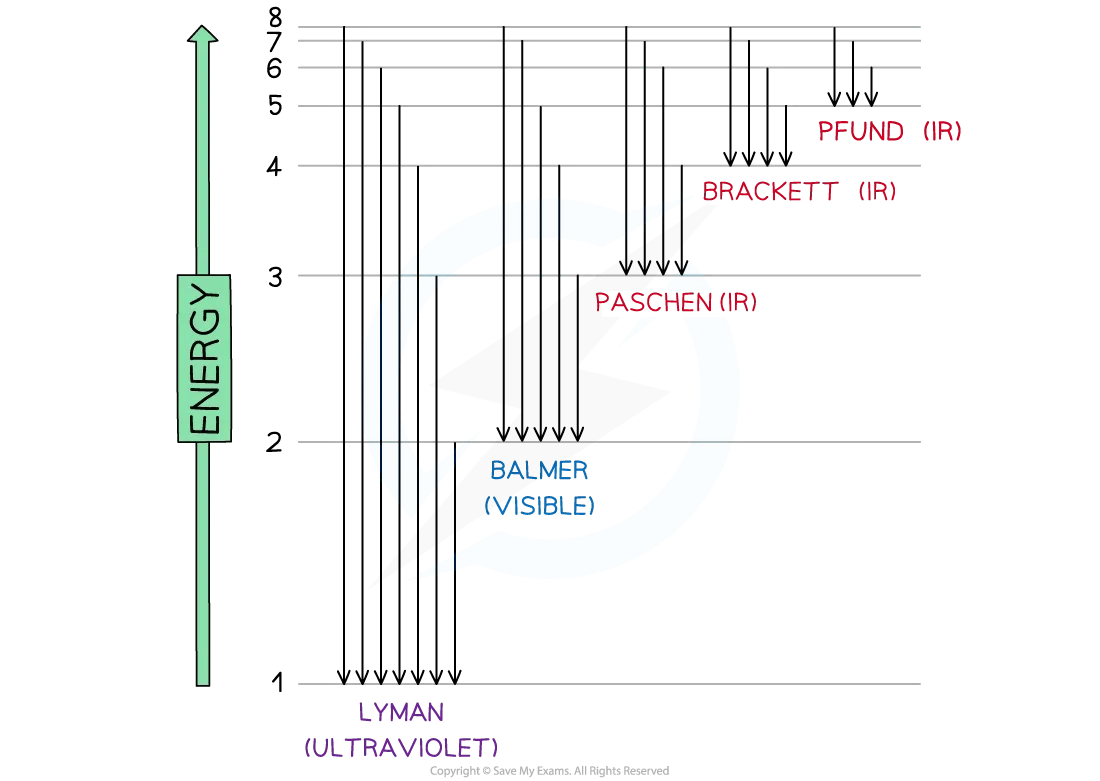Emission Spectra (DP IB Chemistry) : Revision Note
Emission Spectra
Electrons move rapidly around the nucleus in energy shells
If their energy is increased, then they can jump to a higher energy level
The process is reversible, so electrons can return to their original energy levels
When this happens, they emit energy
The frequency of energy is exactly the same, it is just being emitted rather than absorbed:
Absorption and Emission diagram

The difference between absorption and emission depends on whether electrons are jumping from lower to higher energy levels or the other way around
The energy they emit is a mixture of different frequencies
This is thought to correspond to the many possibilities of electron jumps between energy shells
If the emitted energy is in the visible region, it can be analysed by passing it through a diffraction grating
The result is a line emission spectrum
Line emission spectra
Spectrum of hydrogen diagram

The line emission (visible) spectrum of hydrogen
Each line is a specific energy value
This suggests that electrons can only possess a limited choice of allowed energies
These packets of energy are called 'quanta' (plural quantum)
What you should notice about this spectrum is that the lines get closer together towards the blue end of the spectrum
This is called convergence and the set of lines is converging towards the higher energy end, so the electron is reaching a maximum amount of energy
This maximum corresponds to the ionisation energy of the electron
These lines were first observed by the Swiss school teacher Johannes Balmer, and they are named after him
We now know that these lines correspond to the electron jumping from higher levels down to the second or n = 2 energy level
A larger version of the hydrogen spectrum from the infrared to the ultraviolet region looks like this
Full hydrogen spectrum diagram

The full hydrogen spectrum
In the spectrum, we can see sets or families of lines
Balmer could not explain why the lines were formed - an explanation had to wait until the arrival of Planck's Quantum Theory in 1900
Niels Bohr applied the Quantum Theory to electrons in 1913, and proposed that electrons could only exist in fixed energy levels
The line emission spectrum of hydrogen provided evidence of these energy levels and it was deduced that the families of lines corresponded to electrons jumping from higher levels to lower levels
Diagram to show the energy transitions for the hydrogen atom

Electron jumps in the hydrogen spectrum
The findings helped scientists to understand how electrons work and provided the backbone to our knowledge of energy levels, sublevels and orbitals
The jumps can be summarised as follows:
Electron Jumps & Energy Table
Jumps | Region | Energy |
|---|---|---|
n∞→ n3 | Infrared | Low |
n∞ → n2 | Visible | ↓ |
n∞ → n1 | Ultraviolet | High |
Worked Example
Which electron transition in the hydrogen atom emits visible light?
A. n = 1 to n = 2
B. n = 2 to n = 3
C. n = 2 to n = 1
D. n = 3 to n = 2
Answer
Option D is correct
Emission in the visible region occurs for an electron jumping from any higher energy level to n = 2

You've read 0 of your 5 free revision notes this week
Sign up now. It’s free!
Did this page help you?
